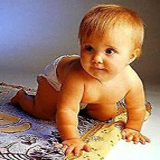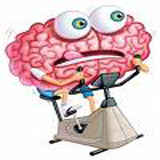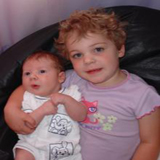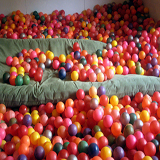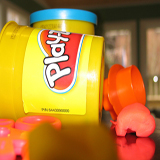Being Left Handed - a Challenge?
Okay, so I have a left handed child. Being left handed, brings forward a whole lot of new challenges for her and for me as parent.
I thought it would be great fun to explore some interesting left handed facts and also take a look at some famous left handed people.
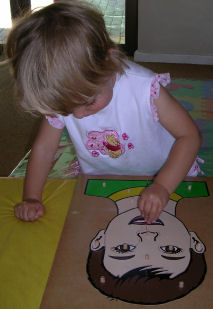
During the normal stages of hand eye coordination, different children demonstrate varying levels of hand control.
Being left handed might influence the pace at which hand eye coordination development in children occurs.
Interesting Fact about Left Handed People:
It has been said the that left handed people are among the most intelligent. Now, I don't have any actual proof of this, but I certainly hope this is true. Being left handed, my own daughter has a great deal of creative talent.
Some more left handed facts include:
- There seem to be a high likelihood that in twins one will be left handed. Now not in all cases of course, but in a lot. Think of the twins you know and see if one of them is left handed.
- Being left handed seem to improve your chances to excel in sports such as tennis and swimming.
- 1 in 4 Apollo astronauts were left handed.
Here I will address various topics that might influence hand eye coordination in children.
Balancing Safety with Challenge
Now that she feels more confident about her hand eye coordination, your toddler enjoys manipulating small objects.
Therefore zips, tiny buttons, pins lying on the floor, small wooden beads, bits of dried food that she discovers, all fascinate her. She wants to pick them up and explore them, and perhaps even put them in her mouth.
She needs this sort of hands-on experience to develop her hand eye coordination even further, but there is a risk of injury if she is unsupervised.
You have to balance your safety concerns with her need for varied play opportunities. So keep all sharp items out of reach and watch over her very carefully when she plays with permitted small items.
The first thing I did was to buy my left handed child a pair of left handed scissors. Left handed children need the right equipment to perform the same as there right handed peers.
Practice Makes Perfect
The typical toddler this age likes to get things right the first time. And if he doesn't, temper tantrums and tears may follow.
This often shows through with activities involving hand eye coordination because they need concentration and patience to achieve steady hand movements. When the piece of the inset board doesn't immediately fit, he may end up hurling it across the room.
Encourage your toddler to practice again and again with any hand eye coordination task that he finds particularly difficult.
Explain to him that everyone learns gradually and that the more he tries, the easier it will become.
Step by Step
When faced with a challenge involving hand eye coordination, your toddler might feel overwhelmed - she thinks it is simply too much for her.
You can help her develop hand control by teaching her how to approach the activity in small steps. Suppose, for instance, she struggles to fit shapes into a shape sorter. Show her a strategy.
Explain that she should select one shape only, and that she should then take that shape to the first hole to see if it fits. If it doesn't, she should move the same shape to the next hole, and then repeat the process until she achieves success.
The Unacceptable Side of Hand Control
When roused to anger, your child is tempted to hit the source of his irritation - whether that is his brother, sister or parent.
Without thinking through his action, he impulsively raises his hand and whacks the object of his wrath. Such misuse of his hand control skills is totally unacceptable and should always be discouraged.
Make sure your child understands that you are angry at his aggressive action, explain that he should express his displeasure verbally not physically, and ask him to consider what he would feel like if someone hit him in that way.
You will probably have to repeat this process again and again until he gains better control of his impulses.
From Inset Board to Jigsaws
Your child is ready to move from wooden board games (inset board puzzles) to jigsaw puzzles at this age, though the transition is challenging.
Unlike inset boards, jigsaw puzzles have no outer frame to guide your child. Pieces can fit anywhere in any orientation, so there are more possible combinations than for the pieces of an inset board.
Initially, buy your child a two-piece jigsaw only, one that has an easily identifiable picture. The picture, rather than the shapes of the pieces, will guide her.
Once she has achieved a two-piece jigsaw, progress to a three-piece then a four-piece and so on. Build up the degree of difficulty gradually.
Being left handed surely is a challenge. Luckily for parents there is a whole lot of left handed products available. Just keep your eyes open and ears on the ground.
Just a last note on being left handed:
Left handed writing should be closely monitored at school. Left handed children should sit on the left side of the table if there are two children sitting at one desk.
Otherwise the left hand of the one child and the right hand of the other child will bump into each other, limiting hand movement necessary for writing.
Find It!
Can't remember where you read something specific? Just type in your search term in the box below and your specific topic will be returned to you instantly.





